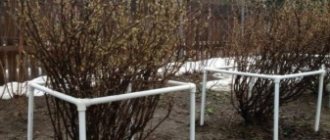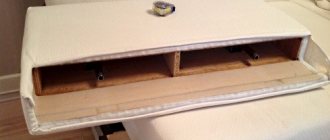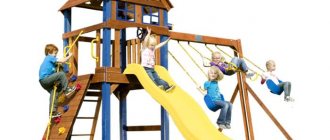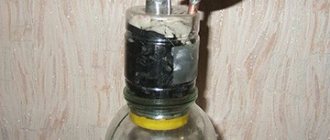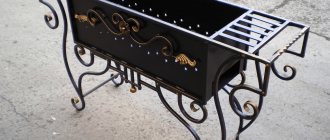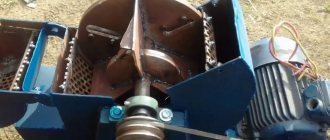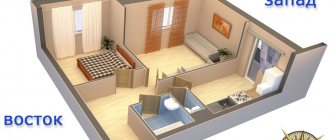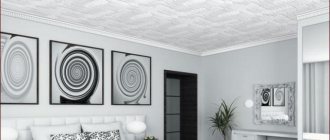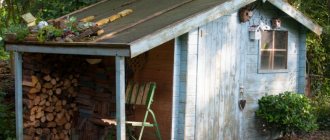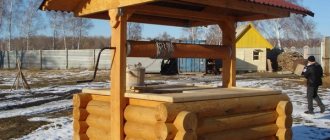Building an enclosure with your own hands is a responsible, time-consuming task. You first need to decide on the dimensions of the building, its location in the cardinal directions, in the back or front yard itself.
Directly, how to make an enclosure for a dog with your own hands, when the structure complements the architecture and interior of the site. Which is also important for the Alaskan Malamute and the bulldog. Criteria for habits, size, and adaptability to weather conditions are required: the height of the pen, the volume of the walking area, whether or not there is a booth inside.
The main criterion is size. The interior space is larger, it is more spacious, the paddock is comfortable and cozy.
The behavior and well-being of pets in a 6-meter pen for 1 individual will be much better. ALABAI, MASTIFFS, large dogs require increased room size. When enclosures are considered a structure where the owner is trying to “lock up” for the night, before his arrival, a 6x6 square enclosure is suitable, but not less than 8x8 m.
Where to place it correctly
The correct place is considered to be the one that is typical of the recommendations:
- Preference is a flat, dry area, no drafts or gusts of wind.
- The animal has a maximum view of 120° in both directions.
- The location is not close to the entrance and fence.
- Complete isolation from the owner is eliminated and loneliness is not experienced.
- Away from the windows of the house. So that the smells do not reach the hut.
Base
There is no need to lay a permanent foundation for a dog enclosure. This is expensive and pointless, since the dog doesn’t care much about the fact that the floor underneath him is blown. And dogs are insensitive to ground movements. Most often, ready-made enclosures are installed on bricks or concrete blocks, or even lowered directly to the ground. But if the dog is large and strong, the supporting pillars of the structure are better to be buried and concreted.
Selecting a location
The enclosure creates coziness, comfort, and convenience. To do this, an area on a hill is fenced off so that all cardinal directions are visible. A prerequisite is full visibility of the entrance to a residential building, the entrance gate. This tracking factor for the dog is extremely important; the zones of the tracking points are tracked.
A garden plot with beds and buildings, where the owner spends 80% of his time, is suitable; Irish, English and Scottish setters see it perfectly and watch from time to time. Communication is done with all family members so that the pet does not get bored, whine, or feel anxious.
Other conditions are unbearable for the animal; constant melancholy will cause whining and howling. It is impossible to limit the Shar Pei breed from the world of everyday life, observation, caresses and liberties, usual activities and attention with the owners.
Photo gallery of drawings
Large winter road designed for harsh weather conditions
Sketch with marked areas for walking, sleeping and eating the animal
Project of an enclosure for a large dog
Materials and conditions
The materials are selected to be strong and reliable so that the German Shepherd’s fangs do not chew off the parts of the enclosure fencing. The climatic zones in which the building is being built are taken into account in the calculations, and only then is attention paid to wishes and tastes.
The shed is built solely for entertainment, to house pets for a certain time. There is no booth inside. There are 2 zones - eating, spending time. The walking area is equipped with beds, making it comfortable for relaxation.
Basic requirements for the finished structure
In any photo of a dog’s enclosure, made correctly, it is noticeable that the dog feels calm and confident in it: it is not damaged by the teeth and claws of an animal experiencing stress.
To ensure comfort for both animals and owners, the enclosure must be:
- safe - without sharp and “torn” surfaces, cracks, all elements should be securely fastened so that the tenant does not destroy his home and is not injured;
- reliable - made from building materials that are resistant to mechanical stress and the influence of climatic conditions;
- convenient for maintenance - cleaning and maintenance;
- equipped with all the important elements for animal living;
- zoned if necessary.
Construction of housing for small dogs
The main rule to avoid miscalculations: measure a hundred times, cut once. From here, sketches and tips will give a correct and competent idea of the pet’s future home.
Construction requirements
- Dimensions are chosen no more than 6-8 m2. In a high and deep enclosure, the dog will become scared, uncomfortable and uncomfortable.
- The roof is partially covered or not done.
- The height of the walls is no higher than 1500 mm. There is no need to transfer money to the height of the room.
- A maximum of 2-3 walls are covered with solid material, 1-2 are open. The dog feels safe in such housing.
- The floors are covered with wood, poured with concrete with a panel covering. A small dog can easily catch a cold due to drafts, this must be taken into account.
- The loungers are made in the form of a children's mattress with a cross section of 12–15 cm.
The optimal dimensions of an enclosure for a dog with your own hands are inexpensive, according to the experience of dog handlers: 2×3; 3x3, 4x6 m. When constructing, it is useful to start working on drawings, mini projects, standard series, and, of course, recommendations from expert professionals.
Kennel
You don't have to build a kennel that is too big. Its area should be exactly such that the dog can turn freely, and its height should be approximately one and a half times the height of the dog at the withers.
The doghouse needs to be warm, so they make it wooden. Ideally, make the floor and walls in 2 layers (for example, board and plywood) and insert thermal insulation material between them.
The size of the kennel should match the size of the dog
The dog spends most of its time in the enclosure. Therefore, it is extremely important to make it spacious, comfortable and warm.
Buildings for medium purebred dogs
Medium-sized pets spend more time in the yard - during daylight hours, or on a warm starry night. When owners have no conditions and find it troublesome to keep pets at home, they prefer to set up a house building in the yard. English toy terriers prefer to build cozy buildings.
The presence of a booth or house within the height of the walls inside the pen is carried out according to the Standards and standard design. 3 zones are formed: for sleeping, feeding, and active walking. The dimensions of the house are standard and optimal: 65 cm high, 80 cm wide. In a cozy shelter, the snow-white Swiss Shepherd will feel much more spacious and at ease.
How is a home made?
Typical design of a pen for medium breeds of dogs: side length 3x2; 4x4; 6x4 m.
- Area 6-10 m2 (smaller is worse, the dog is cramped inside, the larger the feeling of aggression and unsafe behavior).
- The floors are made of wood on joists, concrete insulation is insulated with planks. Suitable in winter.
- 3 walls are made open, 1 edge is sewn up.
- There is a blank wall facing the North, maximally protecting the Doberman from slush, wind, rain and bad weather.
- The height of the walls is 2-2.5 m, so that the golden RETRIVERAN and BORDER COLLIE will not be able to jump over it.
Adequate dimensions: 3×3; 2x4 m. There are up to 100 options for enclosure drawings on the RuNet.
Making walls
When deciding what to make an enclosure from, you need to remember that the materials should not be impregnated with substances that can release odors when heated.
For the dog it will be simply painful and very harmful. Open walls can be made of chain-link mesh (this is the most popular and cheapest option), welded mesh, metal elements, and so on.
The main thing is that the dog cannot be injured by sharp structural elements. A blank wall can be made of boards, bricks, or it can be the wall of a house or barn.
Enclosures for large purebred pets
MASTIF, Bernese SENNENHUND, which are difficult and impossible to keep in an apartment, are placed in dwellings built in the yard, pens of beautiful appearance and design. They need space; when there are two Labradors, it is worth thinking about choosing a place and building that is suitable in size.
Big friend needs a bigger pen. The area selected is at least 10 m2, the height of the partitions is from 2.5-3 m. Construction and sanitary standards are selected according to a reference book, standard projects, and tips from dog handlers.
The basis can be enclosures and the principle of constructing pens for medium-sized dogs: the same 3 open walls, 1 closed part.
A cute AUSSIY, just like a human, cares about warmth, coziness, and comfort. Floors can be successfully made on a cement base to make them stronger with the installation of insulation; the top is covered with wooden blocks or dense flooring. The enclosure must be covered, the dog will withstand any bad weather during the winter and will not experience discomfort.
The best dimensions for an enclosure are 3x4; 4x4, 6x6 m. The drawing is selected according to the standard series, taking into account the zoning of the region, the structure of the dog, and age.
Location
Task No. 1 when choosing the location of the future enclosure is to ensure maximum visibility of the territory under the dog’s control. And task No. 2 is to remove this structure from possible sources of strong odors . There are “scents” that you don’t have to be afraid of - this is amber from a poultry house or from a barnyard, the dog can easily sniff them. But the constant ammonia smell will quickly weaken the capabilities of his nose. There are also fragrances that are completely harmful to a dog’s health, and you should stay as far away from them as possible.
When installing the enclosure, there is no need to navigate by the cardinal points or the direction of the winds. But if a pen is being built for a northern dog (husky, samoyed, husky, etc.), then it would be more correct (if there is such a technical possibility) to turn it with its façade to the north. An animal from the south (Caucasian Shepherd or Central Asian, for example), will be more comfortable living “facing” its native latitudes, that is, to the south.
Important! If there are blank walls near the enclosure, it is better when they stand against the movement of the prevailing winds in the area.
Making a booth
The Boston Terrier and French Bulldog will be in comfort when the enclosure is supplemented with a good-quality booth. The first rule is the parameters, they are significant and are chosen according to the physique of the LEONBERGER or Rottweiler. The Caucasian Shepherd will not go inside until it becomes comfortable and spacious for sleeping, resting, staying until sunset, the heat subsides, and coolness sets in.
Based on this, they draw a sketch, detail the drawings, and calculate the materials:
- The pet is measured at the withers with the tips of the paws.
- The second parameter, from the nose to the tailbone, will give the size in the lying position.
- Tolerances are made + 15 cm.
3 sizes will create an ideal neat outline: Siberian Husky and Samoyed.
Dimensions
The size of the enclosure depends on the size of the dog: the larger the animal, the more space it needs.
The total area is determined by the height of the dog at the withers:
- 45–50 cm – at least 6 square meters. m;
- 50–60 cm – at least 8 sq. m;
- more than 60 cm – 10 sq. m or more.
The correct calculation of the height of the enclosure, that is, the distance from the floor to the ceiling, is also important. In this case, the height of the dog at the withers is not particularly important.
A person will have to enter the fence at a minimum to clean and feed the animal. Therefore, its height is calculated based on one’s own height.
Advice! When purchasing a puppy, it is recommended to clarify the parameters of the dog in adulthood, because based on these data you will have to calculate the size of the enclosure for your pet.
The height of the structure is made to be human height
Construction of a booth house
Materials required for the booth:
- Wooden pine edged board 200x30 mm.
- Insulation (shavings, sawdust) 0.5 m3.
- Self-tapping screws 3x70, nails 100x3, 90x3 mm.
- Bar 70x40 mm.
- Tools – hacksaw, hammer, drill, SCREWDRIVERS.
- Wood varnish.
Making a kennel
The bars are knocked together into a frame, fastening is done with nails. Self-tapping screws secure the corners of the frame. For strength, corners made of metal and wood are installed. The box is made according to the dimensions of the withers - the tips of the paws, from the nose to the tailbone (+15 cm).
A hole is cut out on one of the walls. The dimensions of the height, width of the manhole and kennel are selected according to the pet (+ 5 cm to the height, width). All joints and edges of wooden structures are sanded with sandpaper.
Roof
In most cases, the roof of the structure is made pitched with an overhang of at least 20 cm. A metal profile, corners or wooden beams are used to make the frame. Slate, metal tiles or polycarbonate sheets are suitable for the roof.
The simplest roof option is a pitched roof
Construction of an aviary
Pegs, corners of the building, guidelines for installing racks, and laying the foundation are placed according to size and location in the selected area. Before construction the following is taken into account:
- Pedigree.
- Age.
- Gender.
- Sides of the world.
- Wind roses.
The optimal enclosure for a dog with your own hands, drawings and dimensions in a standard series, where the parameters are selected based on the height at the withers to the area of the pen (cm/m2): 50/6, 50-55/8, over 65/10. Holes 1.0 x 0.3 m deep are dug along the perimeter of the canopy (4 in the corners, 1-2 on each wall). Racks made of metal pipe Ø 108x3.5, 3.0 m long, are concreted into drilled, dug holes. Concrete grade B20, W 150, F 35.
Before installing the pillars, they are primed at the bottom and treated with bitumen mastic. To make it easier to attach the crossbars to the pipes, eyes made from a 50x50x3 plate are welded. In each eye, 3-4 Ø 4 holes are made for self-tapping screws. Welded joints are cleaned of slag, primed, and painted.
At the bottom of the strip foundation markings along the racks, reinforcement is mounted into the frame and formwork. Reinforcement Ø 6-10 A1 is tied with annealed wire. After installing the reinforcing frame and formwork, the floor is filled with B50 concrete at a height of 40-50 mm above the reinforcement metal (protective layer of concrete).
72 hours after the concrete has reached 70% strength, the formwork is removed and the outer part of the foundation is covered with bitumen mastic. Logs and 70x50 bars around the perimeter are laid on the foundations. The base on which wooden floors are laid, insulation is placed, and the floors are covered with boards or boards.
After the flooring, they begin to construct a rear solid wall from edged boards 200x30 mm. Crossbars are placed along the perimeter of the enclosure in 3 dimensions (bottom, top, middle). A 2D mesh with 4-6 mm wire is attached to the crossbars. Fastening is carried out carefully, using ties and bolts, without sharp ends of metal or wire.
Using rods, not mesh, which is more expensive, will last 10-15 years longer.
Upon completion of work on the walls and floors, a roof deck frame is constructed, purlins and cross members are installed, and sheathing is made. A metal tile flooring and stamped corrugated sheets 10-80 are laid on the frame. Galvanized sheets are coated with polymer paint and enamel. To protect from rain and snow, a 0.5 m high cornice is sewn over the top with a board.
To prevent rotting and mold, boards, wooden frames and timber are treated with fire retardants.
How to make it yourself
The most common options for do-it-yourself enclosures are made of metal and wood. We invite you to read simple instructions on how to make them.
It will be useful for you to learn how to care for a dog’s visual organs, how to properly care for a dog during a walk, how to motivate a dog with treats, at what age do puppies get their first vaccination, how to stop a dog from howling in the absence of its owners, what cereals can be used to cook a dog’s porridge, what included in the general dog training course.
Made from metal mesh
For this option you will need the following tools and materials:
- metal mesh (preferably not chain-link);
- metal rods (for small species you can also use wooden beams);
- wire (welding machine);
- pliers;
- door hinges.
The step-by-step process for making a metal enclosure is as follows:
- From rods we make a structure of the desired shape. The simplest and most common option is a parallelepiped.
- We stretch the mesh over the frame, leaving one wall free.
- In the corners, we connect the mesh with the rods with wire or weld it.
- We place the free wall on the door hinges.
- We attach the latch.
- The floor is covered with plywood and thick fabric.
Important! It is necessary to carefully check that there are no sharp parts, protruding remnants of wire, etc. in the enclosure, that is, anything that could injure the pet.
Made of wood
To build a wooden enclosure you will need:
- planks and slats made of wood;
- file;
- roulette;
- screwdriver;
- self-tapping screws;
- door hinges.
The process of installing a wooden fence consists of the following stages:
- We measure the required length of the slats and shorten them according to the size.
- We knock together a quadrangular frame from the planks using self-tapping screws.
- We measure the required height of the planks and nail them along the entire perimeter of the frame. The distance between the slats should be such that the animal’s head cannot fit through it.
- We make a frame for the doors from slats and stuff strips onto it.
- We put the doors on their hinges.
- We attach the latch.
The wood must be well processed to prevent splinters from getting into the dog's paws. Please note that wooden fences are not suitable for representatives of medium and large breeds.
Why is processing needed?
Everyone knows that cleanliness is the key to health, and this also applies to our smaller brothers. When getting a pet that will be kept in the yard of your house, you need to remember this. To maintain order, it is necessary, after removing waste and food debris from the enclosure, to disinfect the boards there; this will help eliminate unpleasant odors and pathogenic microorganisms.
Pest control is no less important. This is, first of all, treatment for mosquitoes, fleas, and ticks. When the air temperature reaches +5 degrees Celsius, insects begin to become active, in particular ticks, which can be a source of Lyme disease, which is dangerous for animals. When the thermometer rises another 5-10 degrees, mosquitoes join them; they can be carriers of dirofilariasis.
Timely and regular disinsection reduces the risk of illness for your four-legged friend.
Outdoor enclosures 6 and 7. Properly constructed enclosures (block of three enclosures)
These enclosures are built correctly. They are tall enough to be comfortable for cleaning and training dogs.
Block of three outdoor enclosures
The disadvantages include the extremely small area of the enclosure and walking area.
Properly constructed enclosures, the disadvantage is a small walking area
The first constrains the trainer, the second can lead to the fact that the dog, having gone for a walk once, will recover in the enclosure a second time, since there is little space there for several similar procedures.
Rules
To avoid the problems described above, you must first take care of your dog. She is bathed with insect repellent shampoo and treated for worms. Then they begin to process her home.
- Dust, cobwebs and animal waste products are removed from the wooden flooring: wool, food residues, feces. The more thoroughly mechanical cleaning is carried out, which should occur on a daily basis, the more effective the disinfectants will be.
- Raise the boardwalk and dismantle the booth (if it is collapsible). Earth or concrete (tiles) are also sanitized with special solutions. There are also powder antiseptics for the earth.
- According to the instructions, a disinfectant solution is prepared, which is used to treat surfaces once or twice a month; the rest of the time (about once a week), the boards are washed with hot water.
- In the warm season, disinsection is carried out (treatment against insects). It is important to note that disinfection and disinsection are carried out on different days.
- Be sure to inspect the enclosure for traces of rodents; they may come running from other buildings to collect food that has fallen from the bowl.
- Feeding and drinking utensils are washed with disinfectants 1-2 times a month and every day with soapy cleaning solutions.
- We must not forget about the mesh or grate; it is cleaned with the same means.
- Treatment with the solution begins in the following order: ceiling, walls, floor.
Mistakes to Avoid
After building an enclosure, various problems may arise. It is easier to avoid mistakes if you know about possible difficulties in advance. Recommendations from those who have already built enclosures:
- forged decorative elements are beautiful, but can injure the dog. If possible, it is better to abandon them;
- The location of the enclosure should be chosen based on the view that opens. The more territory the dog sees, the more interesting it will be for him;
- When installing a door, it is important that it opens inward. Otherwise the dog will be able to knock it out. It is also necessary to install a lock or deadbolt;
- When using wooden boards, it is advisable not to nail them, because over time they will become loose and come out, which is dangerous for the dog.
The doors to the enclosure are installed last.
Dog at home, on a chain (leash), photos 8 and 9.
More often than not I saw just such a picture. A dominant one-year-old male Central Asian Shepherd, Jamal, before our training began, lived on a closed veranda in the house until he began to attack the owners’ guests.
An enclosure was built for the Central Asian shepherd dog Jamal where a car was parked.
He categorically refused to enter the booth. His enclosure was placed in the place of the car that is visible in the background of the photo.
Labrador Jerry lived on a leash on the veranda
And the magnificent retriever Jerry lived on the open veranda of the rented house while the owners built their cottage.
Outdoor enclosure 1. Beautiful and comfortable, but not without its drawbacks
The aviary can be harmoniously integrated into the design of your estate
I’ll say right away that I’ve never seen a more beautiful enclosure that fits harmoniously into the design of a country estate, either before or since. And yet, the builders did not take into account a very important detail - it does not have a walking compartment, which means that if the owners for some reason do not take the dog out on time, it will have no choice but to relieve its needs in the enclosure. This is a very significant drawback, however, it is typical for the vast majority of outdoor dog enclosures I have seen.

